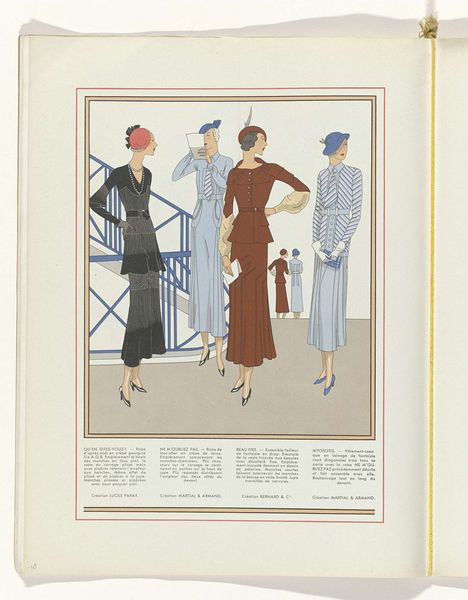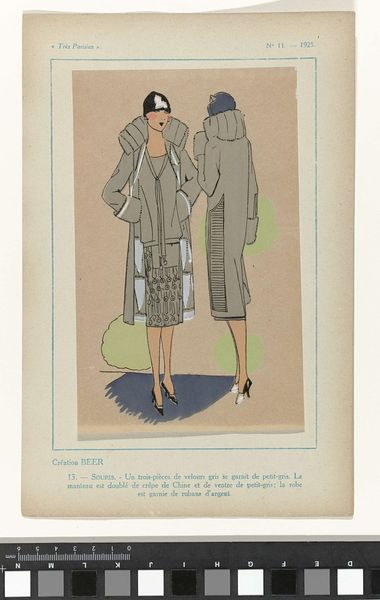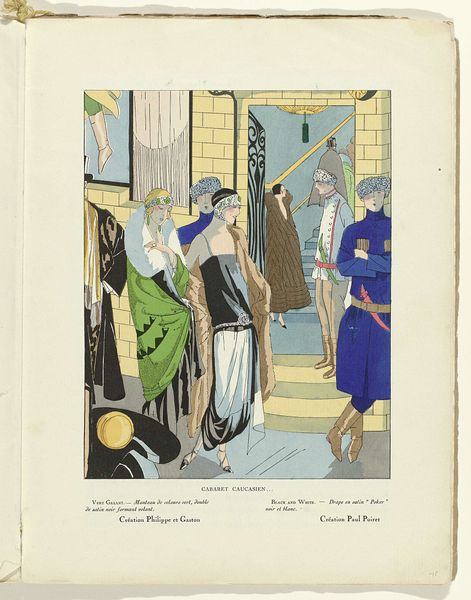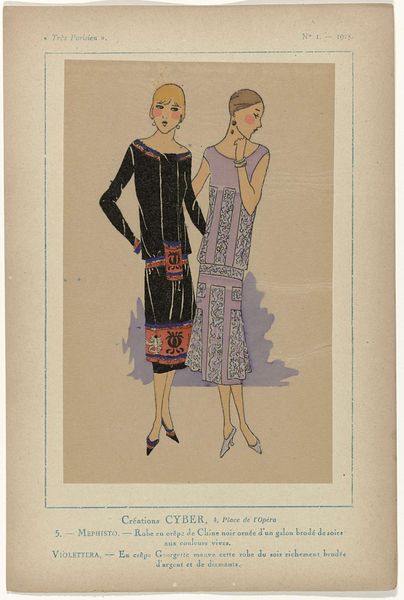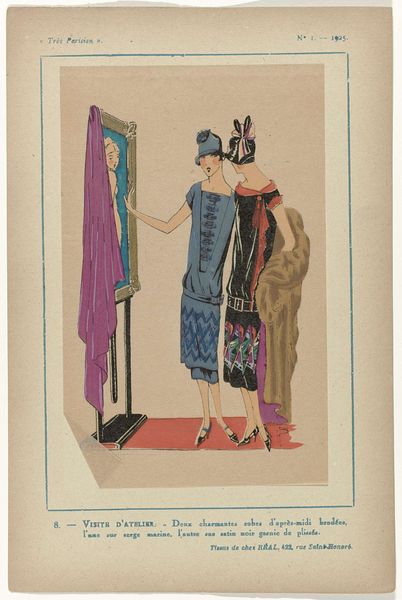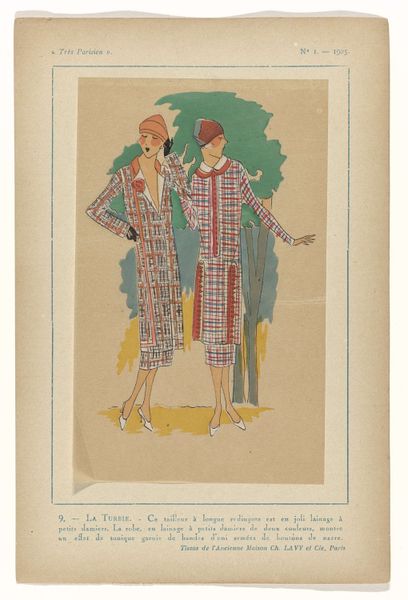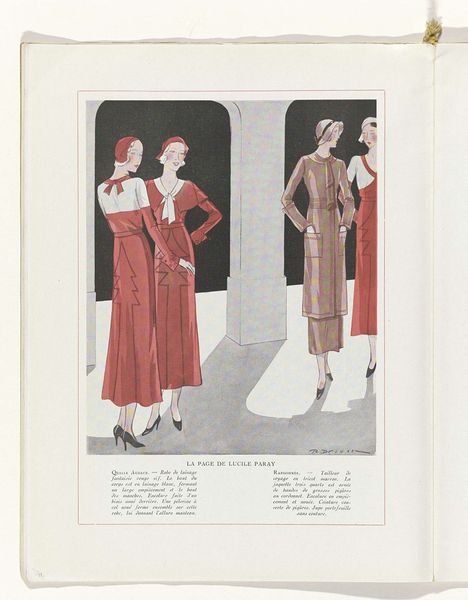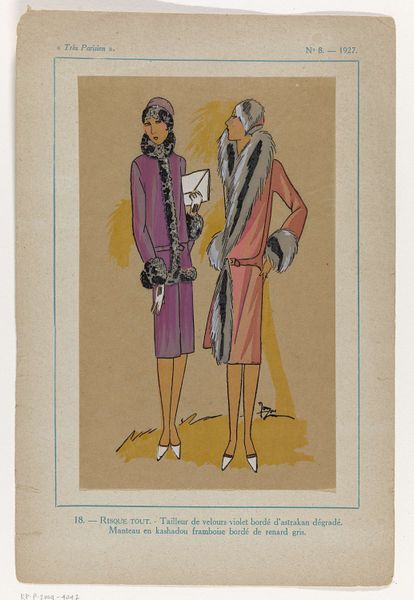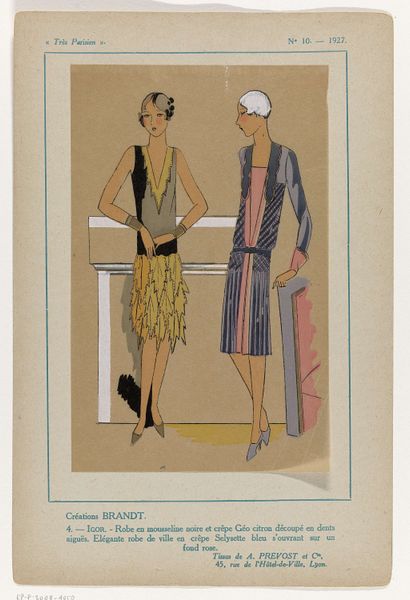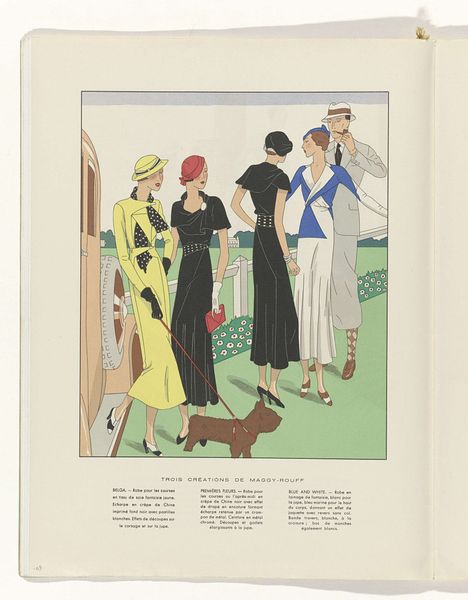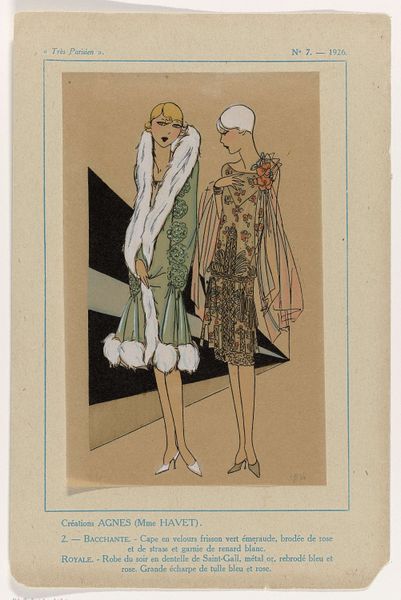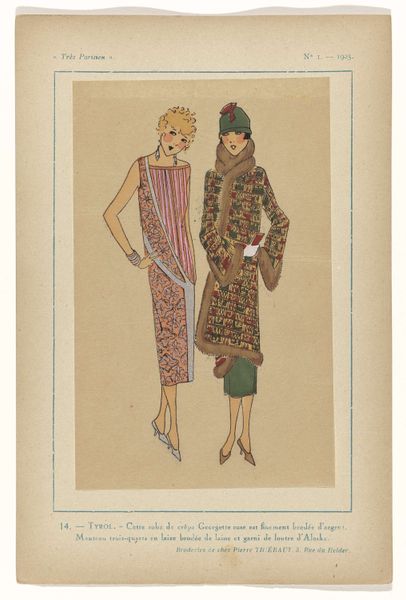
graphic-art, print
#
portrait
#
art-deco
#
graphic-art
# print
#
figuration
#
cityscape
#
dress
#
watercolor
Dimensions: height 233 mm, width 164 mm
Copyright: Rijks Museum: Open Domain
Curator: This print, “Art-Goût-Beauté, 1924 (ca.): Mon Amie,” seems straightforward at first glance. What strikes you about it? Editor: Well, I'm immediately drawn to the details of the dresses. They're so meticulously rendered, and you can almost feel the textures of the velvet and crepe the descriptions mention. What stands out to you, especially in the context of its time? Curator: Exactly! Consider the social conditions in which these designs were produced. We’re looking at a moment of intense industrialization and consumerism. The very title points to "Art, taste, beauty," directly marketing aspiration through fashion. What's your read on the level of mechanization or handcrafted detailing here? Editor: I see the print itself suggesting mass production but those beaded details and the fabric descriptions feel very "high end," quite a contrast! Were they realistically obtainable? Curator: That's key. These prints weren't necessarily about depicting reality, but rather about manufacturing desire. Notice the emphasis on "Création Drecoll" and "Création Jenny"—brand names elevating these dresses from mere clothing to coveted objects produced by celebrated manufacturers. Editor: So, even through a seemingly simple image of dresses, it’s talking about much larger societal trends around consumption, and labor—the means through which these fabrics became a commodity. It's much more layered than just a pretty picture! Curator: Precisely! And understanding the relationship between production, marketing, and aspiration lets us interpret this image beyond its surface. What have you taken away from looking at this piece? Editor: Seeing how an image meant to promote fashion actually holds a wealth of information about economic conditions. Thank you. Curator: And that is where we see what a "materialist" perspective has to offer; looking at the object and production itself reveals the story.
Comments
No comments
Be the first to comment and join the conversation on the ultimate creative platform.
